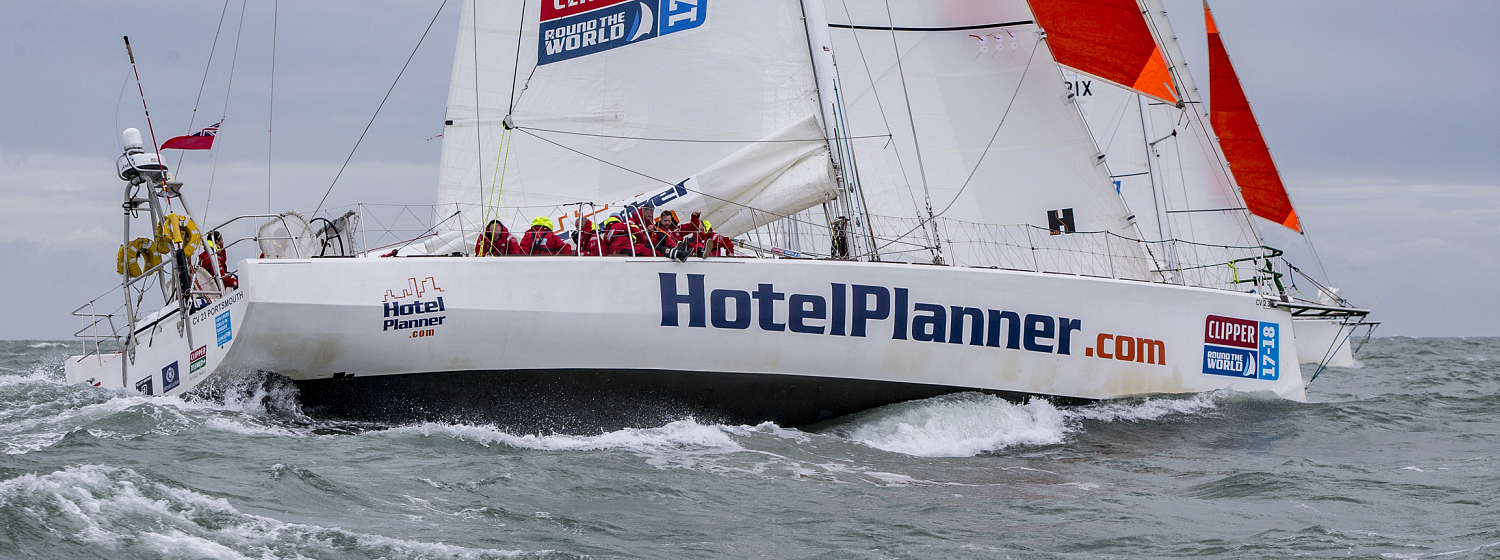Race 2 - Day 7
Crew Diary - Race 2 Day 7: Punta del Este to Cape Town
11 October
Well, it's that time again for another Mother Duty and time to write a crew blog. There has been enough about the Mother Duties so I thought I'd write about some of our most precious possessions on the boat. The sails.......
We have been very lucky so far and are working hard to keep them all in good shape. We also have Chris Fox, our sail repairer, sitting on our shoulders every time the wind gets up and there is talk about sails reaching the "Advised Maximum Wind Strengths"
Firstly, let me set out the basic details relating to our suite of sails:
They are all made by Hyde Sails specifically for the Clipper 70 boats.
For the techs among you I have also included the fabric and the surface area:
The Main Sail, the workhorse is made of Dacron and is 123 Square Metres. We have three reefs set so this sail can be reduced as the wind increases to make the boat more manageable and help stop it heeling.
The Headsails are known as Yankees and are hanked manually onto the forestay. They are also made of Dacron of various thicknesses and we have three:
Yankee 1, largest, 116.6 square metres - Maximum Advised Wind Strength up to 16 knots apparent wind
Yankee 2, middle, 88.86 square metres - Maximum Advised Wind Strength up to 25 knots apparent wind
Yankee 3, smallest, 59.43 square metres - Maximum Advised Wind Strength up to 34 knots apparent wind
We use these sails like gears on a car. Changing up to the bigger sails as the wind decreases or moving back down to the smaller sails when the wind increases. This is where the experience and knowledge of the sails and boat really comes into play. As changing them is a very manual task, you really don't want errors with your choice of headsail. As this is a race you also don't want to be without a Yankee driving the boat forward for very long so it is vital that the decision to change is sound. We are all starting to get a better feel for this and getting slicker with both reefing and Yankee changes. As you will have seen from photos there is also the Staysail which is hanked onto the inner forestay and fills the gap between the Yankee and the Main. A very important part of the rig and again made of Dacron:
Staysail, 46 square metres – Maximum Advised Wind Strength up to 40 knots apparent wind
This is a very versatile sail and is always recommended to have up for any upwind sailing. It also makes for a good combination with the reefed Main when the Yankees cannot be hoisted due to strong winds.
Well that's covered the basic sails, also known as the white sails, and they form our basic sail plan for racing. They can be used for all points of sailing but have their limitations. In part two of this blog I'll list the other more specialised sails that we carry and describe their use.
In the meantime it's 21:00 on Tuesday 10 Oct and I am sitting in the saloon area listening to the wind increasing, knowing that my crew mates on Port Watch are sailing with two reefs in the Main, the Staysail, and Yankee 2. The wind is gusting around the limits of the Yankee 2 so it maybe that they will need to change to the Yankee 3 and may also have to put reef 3 in the Main during their watch.
These boats are like racehorses, chomping at the bit; the sense of power is incredible when you are helming. To have avearge speeds of 12 knots is easily achievable and with the correct sail trim and favourable winds to see speed of 20 knots is certainly very exhilarating.
So we are well on our way to Cape Town, over 1,000nm covered so far and a week in. Settling down, trimming our sails and looking to make up places.
Time to crank up and check my bunk, make sure my lee cloth is tight and settle into some sleep. Next watch 7 to 1.
Graham.

